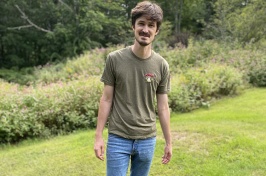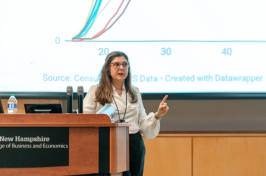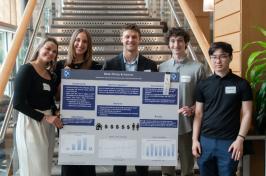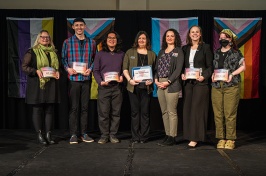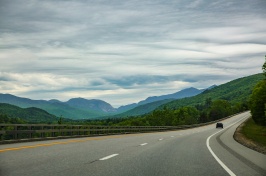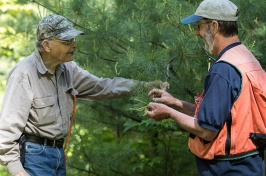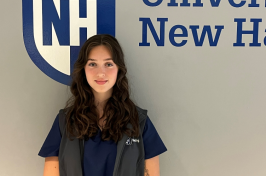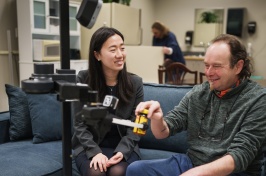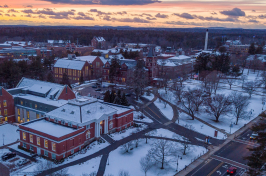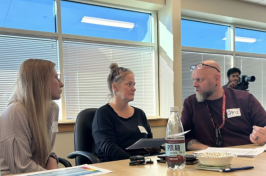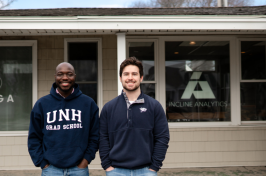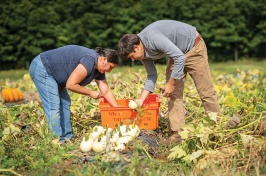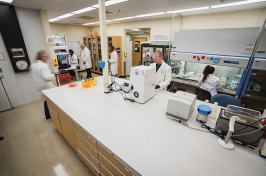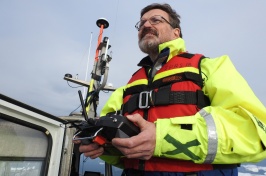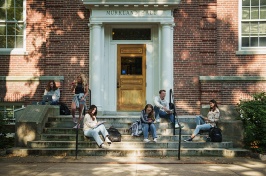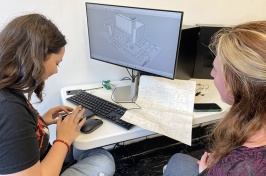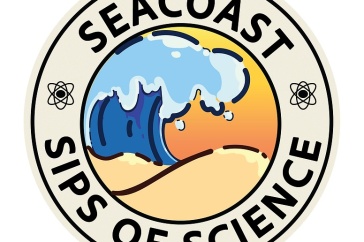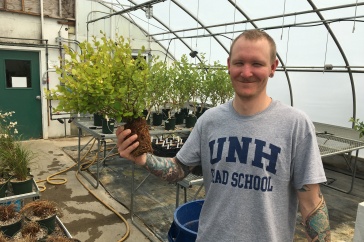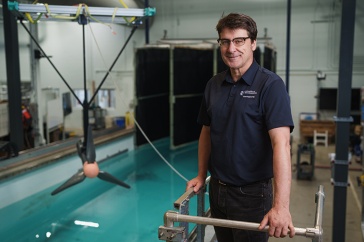
UNH researchers are partnering with local communities, farmers and residents to make the Earth a better place, often using participatory science to directly involve the public in the process. As Earth Day approaches on April 22, here are 11 ways UNH — home to the country’s first endowed Sustainability Institute — is helping local communities, and those around the world, preserve the planet.
PFAS Community Testing
When Seacoast New Hampshire residents got concerned about the possibility that harmful PFAS might be in the foam that forms on the tops of rivers and other waterways, they approached UNH researchers. With funding from NH Sea Grant, Paula Mouser, professor of civil and environmental engineering at UNH, worked side by side with community members on a pilot study to test foam samples from local waterways finding that the toxic chemicals were seven to 70 times higher in the surface foam than levels in the underlying surface water.

Protecting Lake Life
UNH Extension’s Lakes Lay Monitoring Program (LLMP) helps track the health of New Hampshire’s popular lakes for harmful bacteria like cyanobacteria — a bluish-green algae that can be harmful to humans and animals. UNH’s LLMP trains students and concerned citizens to take samples from lakes around the state on a regular basis gathering information on water clarity, temperature and local conditions that could signal challenges to the lake’s water quality.
Flooding Sensors to Help Preserve Local Museum from Sea Level Rise
As rising sea levels and flooding threaten the historic homes at Portsmouth’s Strawbery Banke Museum, UNH researchers have developed and installed sensor technology that monitors water levels, temperature and salinity in the basements. Being able to monitor these measurements helps the museum plan and adapt and preserve the centuries old buildings.
Teach a Man to Fish, Sustainably
UNH’s Center for Sustainable Seafood Systems is creating a global educational program that will focus on community-based seafood production for students from around the world to implement aquaculture techniques specific to their culture and communities. The program will bring together UNH expertise from marine science, ocean engineering, business and sustainability to help address food availability for future generations.
Moo’ving Methane to Lower Levels
UNH’s New Hampshire Agricultural Experiment Station researchers have partnered with Bigelow Laboratory for Ocean Sciences to work with dairy farmers in New England to investigate adding seaweed to the diet of dairy cows to improve milk quality, animal health and help reduce the production of methane, a greenhouse gas. Recent UNH research found nearly half of organic dairy farmers are receptive to paying a little extra for a methane-reducing seaweed feed.
Climate-Tolerant Crops
Researchers at UNH think they have found a good candidate for a climate tolerant, pollinator-friendly crop—Tartary buckwheat, an underutilized crop with high nutritional value and unique qualities that make it suitable across a wide range of soils and weather conditions. The researchers have been growing and evaluating the lesser-known, nutritionally robust buckwheat species, which can grow in just a few months and tolerate dry and infertile conditions.
Reducing Carbon Footprints
UNH’s Sustainability Institute is helping communities and businesses across New Hampshire and the region reduce carbon footprints by providing critical measurements. SIMAP (Sustainability Indicator Management and Analysis Platform) is a one-of-a-kind, UNH-created nitrogen and carbon accounting platform used by more than 500 academic institutions, nonprofits, small businesses, municipalities and other organizations. The institute offers a Climate Action Clinic to train students to help organizations use SIMAP and reduce emissions; to date, more than 90 students have helped close to 30 organizations.
Inspiring Students with the Earth Around Us
The “Earth Around Us” tent project brings high-quality outdoor STEAM experiences to elementary school students around the Northeast. The program shares pop-up tents with ecosystem murals, storybooks and hands-on activities that help enhance students’ scientific understanding of the soil, water and Earth systems and introduce them to local scientists, foresters and ecologists. The tents were developed through a collaboration between UNH’s New Hampshire GLOBE Partnership and the USDA Forest Service.
The Future of Snow
Researchers in UNH’s Earth Systems Research Center are focusing on the rapid warming of winters in the Northeastern U.S, looking at the impact of carbon dioxide emissions on future climate warming scenarios. Liz Burakowski, a research assistant professor, and Alexandra Contosta, a research associate professor, found that a reduction in emissions could help retain almost three weeks of snow cover and below-freezing temperatures which are important in preserving vital forest ecosystems as well as maintaining the region’s multimillion-dollar winter recreation industry.
Microplastic Mystery
Scientists at UNH are helping address public concerns about microplastics in local estuaries, like Great Bay in New Hampshire and Great Marsh in Massachusetts, and helping people understand their impact. Microplastics can be found in and be harmful to juvenile fish, shellfish, crustaceans and other aquatic life. Data collected by scientists at UNH are being used to create models to learn where the microplastics originate, where they settle and accumulate in the waterbody, their impact and if they may be increasing or decreasing over time.
Be a Nature Groupie
Since launching in 2014, Nature Groupie — a UNH Extension project — has connected more than 12,000 nature-loving volunteers with 400 conservation organizations in New England. Nature Groupie’s online calendar offers 20 opportunities to help save the Earth for Earth Day.
-
Written By:
Robbin Ray ’82 | UNH Marketing | robbin.ray@unh.edu | 603-862-4864





